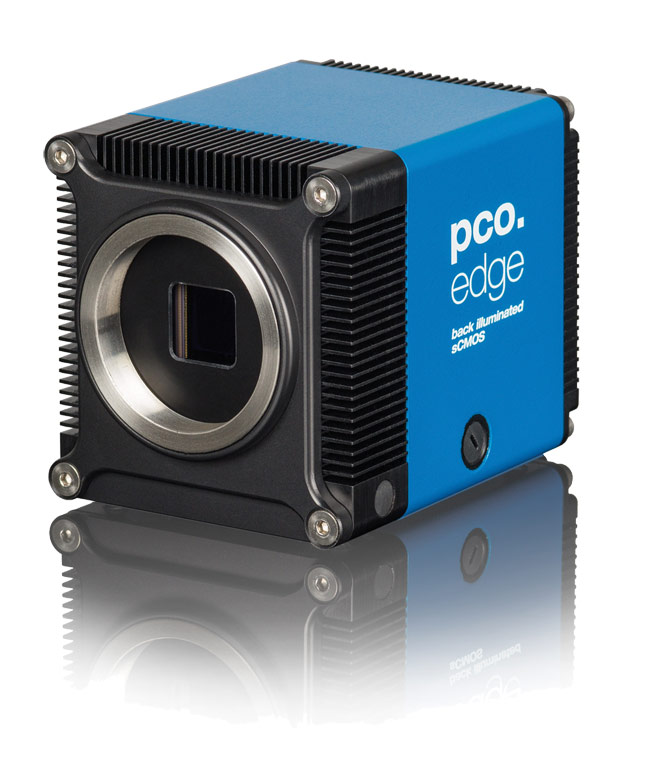|
Thursday, November 15, 2018 |
|

|
|
|

|
| sponsor |
 |
|
Quantum Dots Replace Dyes to Stabilize Cell Imaging
A new molecular probe, based on the fluorescence in situ hybridization (FISH) technique, uses compact quantum dots (QDs) instead of fluorescent dyes to illuminate molecules and diseased cells. Developed by a team from the University of Illinois at Urbana-Champaign and the Mayo Clinic, the QDs provide greater stability and accuracy compared with dyes.
|
|
|
|
|
|
Scientists Demonstrate Topologically Protected Biphoton States Needed for Quantum Logic Gates
An optical circuit based on the principles of topology could provide protection for propagation of biphoton states, which will be needed for quantum computing. Researchers at the University of Sydney have experimentally demonstrated topological protection of biphoton states, and have shown that topological design could provide the robustness required for quantum optical circuitry.
|
|
|
|
|
|
Texas Petawatt Laser to Be Used in Collaborative Network
The University of Texas at Austin will be a key player in LaserNetUS, a new national network of institutions operating high-intensity, ultrafast lasers. UT Austin houses one of the most powerful lasers in the country, the Texas Petawatt Laser. The university will receive $1.2 million to fund its part of the network.
|
|
|
|
|
|
 pco.edge 4.2 bi: Back Illuminated sCMOS
pco.edge 4.2 bi: Back Illuminated sCMOS
PCO-TECH Inc.
Innovations aren’t always about having that one big new idea. Unique technology also comes from evolution, combining existing and new technology. When PCO’s tried and trusted pco.edge series pools forces with modern back illuminated (bi) 16 bit sCMOS sensor technology, we call the result: pco.edge 4.2 bi.
Visit Website
Request Info
|
|
|
|
|
Perovskite-Based LEDs Achieve a New Efficiency Record
A new efficiency record has been set for perovskite-based LEDs. The researchers showed that by forming a composite layer of the perovskites together with a polymer, it was possible to achieve light-emission efficiencies close to the theoretical efficiency limit of thin-film OLEDs.
|
|
|
|
|
|
Photodetector Mimics Directional Hearing in Small Animals
Researchers from Stanford University have drawn from nature — specifically, from the ear structure of the gecko — to devise a subwavelength photodetector that can measure both the intensity and incident angle of light. Such a system could be used by tiny cameras to detect where light is coming from, without the bulk of a large lens.
|
|
|
|
|
|
Berkeley Lab to Build Advanced Quantum Computing Testbed Read Article
IPG Photonics to Acquire Genesis Read Article
Fully Flexible, Foldable Smartphone Is Now a Reality Read Article
Syntec Optics Launches Fabless Integrated Photonics Manufacturing Read Article
Schunk Group Acquires Stake in OptoTech Read Article
|
|
|
|
ASCB/EMBO 2018
December 8-12, 2018 - San Diege Convention Center - San Diego United States
Photonics Media Booth: 218
The 2018 ASCB/EMBO Meeting is the primary forum for discovery and cutting-edge research in cell and molecular biology. Conference highlights will include a daylong meeting on stem cell biology as it pertains to cell biology research and tissue regeneration; workshops on the latest scientific techniques and methods; member-organized scientific subgroups; professional development and leadership training; major award lectures for top international scientists; and more.
|
|
|
|
Materials and Methods for Smart Glass, Smart Windows, and Building Shells
Wed, Dec 5, 2018 1:00 PM - 2:00 PM EST
This webinar will introduce a cost-efficient, high-performing smart glass system for windows, windshields, roof panes, and building envelopes. The system is based on a reflective structure that switches to transmissive when an index-matching fluid is introduced. You will learn about the technology used to develop and fabricate the smart glass system, including the use of optofluidics and 3D printing. The presenter, professor Keith Goossen, will also discuss future goals and potential applications for his smart heating, cooling and lighting system.
|
|
|
|

CALL FOR ARTICLES
Photonics Media is currently seeking technical feature articles on a variety of topics for publication in our magazines (Photonics Spectra, BioPhotonics, and EuroPhotonics). Please submit an informal 100-word abstract to editorial@Photonics.com, or use our online submission form.
|
|
|
|